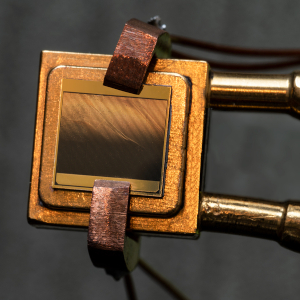MIT engineers have built a record-breaking thermophotovoltaic cell. It has no moving components and operates at temperatures of 1,900 to 2,400 ° C, which are unavailable for conventional steam turbines. Thermophotovoltaic cells could become the basis of distribution networks, completely built on renewable energy.
–
Record efficient thermophotovoltaic cell. Credit: Felice Frankel / MIT.
–
Solid energy thermophotovoltaic cells (TPV, according to the English Thermophotovoltaic) are a hit in the energy sector. They have no moving parts, which predisposes them to achieve higher efficiencies at high temperatures. Such cells could become part of grids using only renewable resources.

Asegun Henry. Credit: MIT.
–
The new thermophotovoltaic cell set a world record in its category, reaching 40 percent efficiency. It thus surpassed traditional steam turbines, which are traditionally used to convert heat into electricity. These turbines typically achieve efficiencies of around 35 percent, and also have their limits in terms of maximum temperature.
Thermophotovoltaic cells convert high-energy photons of heat sources into electricity. In combination with thermal batteries, they can extract energy from the Sun and store it for further use as needed. According to Asegun research team leader Henry of the Massachusetts Institute of Technology (MIT), one of the major benefits of solid-state thermophotovoltaic cells is that they can operate at high temperatures while being less expensive to maintain – because they have no moving parts. Just place them properly and then generate electricity.

Logo. Credit: MIT.
–
The thermophotovoltaic cell, which broke the record, produces electricity from heat sources with temperatures of 1,900 to 2,400 ° C. These temperatures are too high for conventional steam turbines, mainly due to their moving parts. We are witnessing an increase in the efficiency of thermophotovoltaic cells, thanks to which their usability is also increasing. The current record in the efficiency of these cells was 32 percent, while most of today’s thermophotovoltaic cells achieve an efficiency of around 20 percent.
All indications are that thermophotovoltaic cells work very well, reliably and efficiently. According to Henry, these articles are the last key step in confirming the viability of the thermal battery concept. Expanded renewable energy and a carbon-free grid are looming on the horizon.
Video: Asegun Henry: Sun in box thermal energy grid storage using multi junction PV
Literature
–


